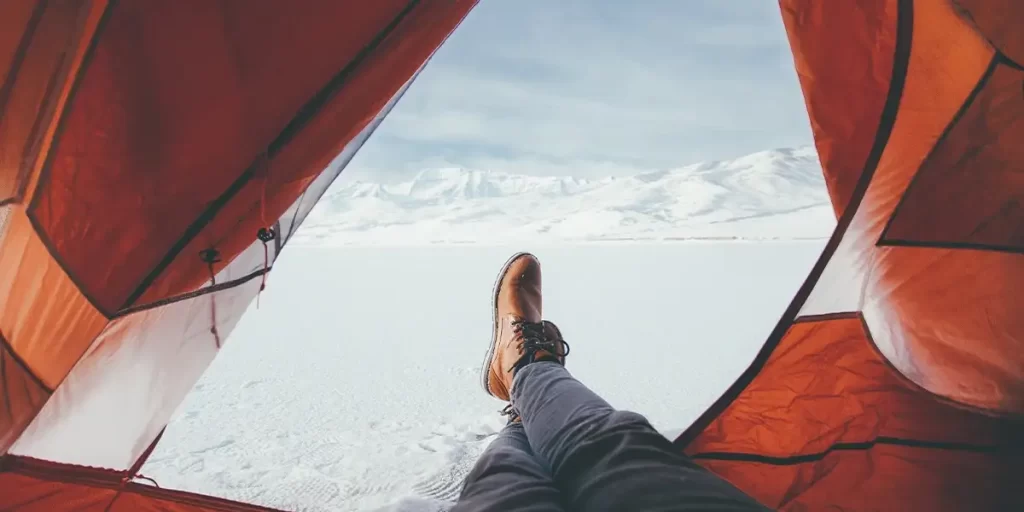

Whether you’re a seasoned camper or just starting out, choosing the right tent, made from the right tent materials, is a crucial part of ensuring a comfortable and enjoyable camping experience.
In this post, we’ll explore the world of backpacking tent materials, examining their characteristics, benefits, and drawbacks to help you make the best choice.

When deciding on the best tent material for your camping adventures, there are several essential factors to think about.
Tent materials come in various types, each with its own set of benefits and drawbacks. Let’s take a closer look at some common tent fabrics:

Nylon is a popular choice for tents due to its affordability and lightweight nature. Nylon is durable and resistant to tears with a good strength-to-weight ratio, making it a reliable option for most tents.
However, on its own, nylon isn’t waterproof. It can be combined with silicone to create SilNylon, which has a 30% higher tear strength and is waterproof to over 1,500mm.
Remember that nylon can break down when exposed to intense UV rays for long periods. Therefore, tents made with nylon might not be the best choice for extended camping in sunny locations.

Polyester tents are cost-effective and lightweight. New formulations have increased their durability while maintaining their lightness.
They stretch less than nylon, making them less tear-resistant but easier to set up. With added PU coating, polyester becomes highly waterproof.
Polyester is a good choice if you prioritize affordability. However, the added density and durability of polyester comes with a slight weight penalty when compared to nylon.

For an unparalleled ultralight adventure, take a look at Dyneema Composite Fabric (DCF), often hailed as the superhero among tent materials.
DCF boasts an exceptional combination extreme lightness and impressive tear strength, making it a top contender for ultralight shelters.
This material excels in being almost completely waterproof and resistant to moisture buildup.
Nonetheless, it’s crucial to note that DCF does have its limitations. It’s susceptible to damage from abrasion under pressure, which might affect its long-term durability over 500 days of use.
So, which material should you choose?
Of course, there are different types of these materials, but these are the basic features to help you make your decision. In the end, it’s a balancing act, just like many things in life.
When selecting a tent material, carefully weigh factors like weight, durability, waterproofness and breathability based on your intended camping style.
Ultralight backpackers may opt for advanced materials like DCF, while more casual campers prioritize affordability with nylon or polyester.
Choose wisely, get the essential features you need for your adventures, and enjoy many exciting nights under the stars ahead.
Interested in an ultralight tent? Check out our TOP 5 guides that cover the lightest tents on the planet.
The best material for a tent in cold weather is a high-quality polyester or nylon fabric with proper insulation and waterproofing. These materials offer a balance between durability, insulation, and moisture resistance, ensuring comfort and protection in cold conditions.
The best material for tents in the rain is a waterproof polyester or nylon fabric. These materials are treated to repel water and keep you dry during rainy conditions. Dyneema Composite Fabric (DCF) is also a great option for tents in the rain. It’s fully waterproof and doesn’t retain moisture, making it effective for wet conditions. However, DCF tents can be expensive and may not be the most durable choice for long-term use.